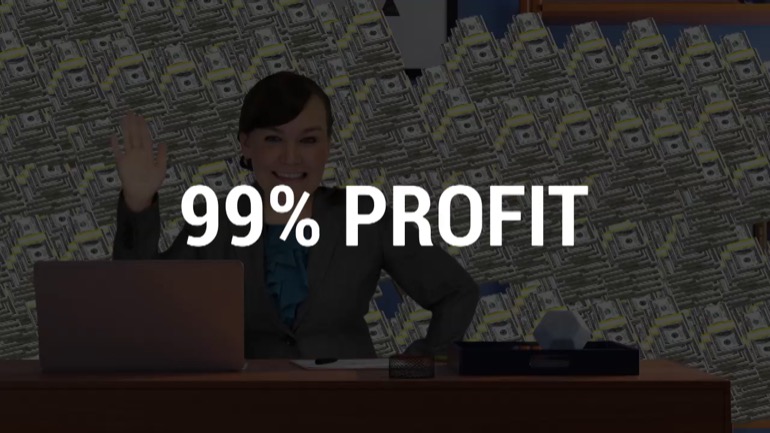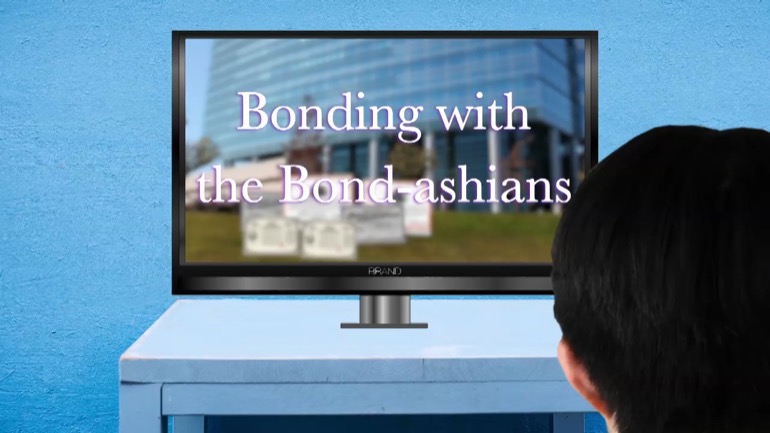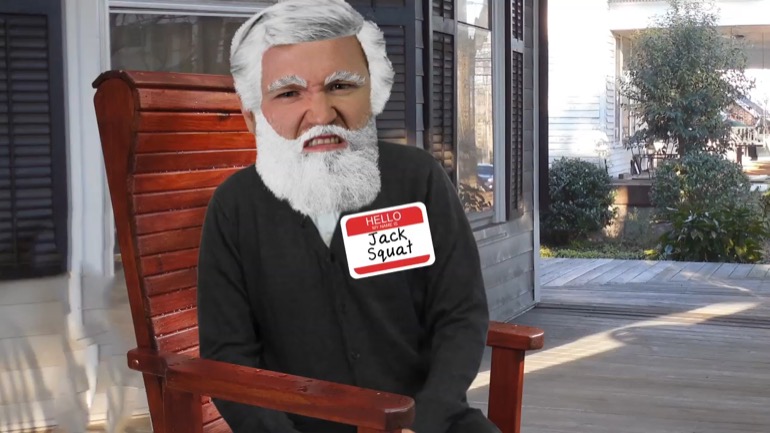ShmoopTube
Where Monty Python meets your 10th grade teacher.
Search Thousands of Shmoop Videos
Principles of Finance Videos 166 videos
How is a company... born? Can it be performed via C-section? Is there a midwife present? Do its parents get in a fight over what to name it? In thi...
Company Formation, Structure, and Inception: Unit Intro. Sorry, Leo DiCaprio fans—we're not going to be breaking down the plot of Inception. We'r...
Okay, so you want to be a company financial manager. It's basically up to you to make money for the shareholders. It would also be swell if you mad...
Principles of Finance: Unit 4, Debt Drivers 4 Views
Share It!
Description:
What are debt drivers, and do they charge less than Uber? Uh, no. We're talking stuff like pre-tax cash profits and assets.
Transcript
- 00:00
Principles of finance Ah la shmoop det drivers All right
- 00:07
dad Well it's Never a good thing if you're still
- 00:09
talking about it on your credit card post black friday
- 00:12
But you know it happens to all of us when
- 00:15
it comes to business Debt is complicated So it takes
Full Transcript
- 00:18
some time to look at some of the most important
- 00:19
drivers of debt No Besides the release of the new
- 00:23
nintendo console that it's us personally every year All right
- 00:26
so our dead driver numero uno is pretax cash profits
- 00:32
So that's cash flow before tax it's just you know
- 00:36
our profits before it's pay the may and the team
- 00:38
and the government All right Well this number is a
- 00:40
proxy for ebitda or earnings before interest taxes depreciation amortization
- 00:45
called kind of cash flow Er adjusted cash flow here
- 00:48
So remember how interest is deductible from taxes Yeah very
- 00:53
important concept here because relates directly to the net cost
- 00:57
of renting money when we borrow it Okay That's a
- 01:00
big driver of dead and that's The reason we look
- 01:03
att pretax cash profits rather than earnings or really anything
- 01:08
else when we think about debt levels because if we
- 01:10
look at it pretax We get a better sense for
- 01:13
what our net cost is going to because that interest
- 01:15
our rent's gonna be deductible from our taxes Alright we're
- 01:18
also highly sensitive too cash earning since banks don't usually
- 01:22
take as interest payment a few percent depreciation of a
- 01:26
tractor smelting plant theyjust want cash right that rent new
- 01:29
money they just want cash Okay so when we think
- 01:32
about debt levels the first place we go to figure
- 01:34
things out is the cash flow statement Remember whose king
- 01:38
Yeah cash so cash profits then get used to pay
- 01:42
interest on a given loan Let's say we're hungry to
- 01:48
buy back one of our own stock because we're really
- 01:51
bullish on our prospects for the next four years of
- 01:54
business And we think the market is a bunch of
- 01:56
morons to be selling our stock at just ten times
- 01:59
earnings Right now we have no debt and no cash
- 02:01
at the moment In this theoretical example of a hundred
- 02:04
million dollars of pre tax cash earnings xing out depreciation
- 02:07
and amortization our banker has told us that if we
- 02:10
borrow less than a red line amount of debt meaning
- 02:13
an enormous amount so that it's risky well we'll pay
- 02:15
six percent of interest Redline is code for too much
- 02:19
borrow less basically that's what red line tells you so
- 02:22
one big ratio we have to worry about is times
- 02:25
interests covered and that's not from the magazine on the
- 02:28
multiple of interest being covered So let's say we borrow
- 02:32
three times ebitda or three hundred million dollars at six
- 02:35
percent interest Well that's eighteen million dollars a year in
- 02:39
interest costs payable in cash all happily deductible So since
- 02:44
we pay thirty percent corporate income tax well that six
- 02:48
percent feels on an after tax basis like it's four
- 02:52
point two percent You see there's all our math their
- 02:54
fancy All right you have a hundred million dollars in
- 02:56
pretax cash earnings this year at eighteen million dollars of
- 03:00
interest We have one hundred divided by eighteen equals five
- 03:04
point five Five x or five five times interest coverage
- 03:08
Probably awesome and very easy to cover with very little
- 03:11
risk that will go bankrupt with just three times dead
- 03:14
Teo even dot leverage But there are ways in which
- 03:17
this can get dicey What if we had tto have
- 03:20
ten billion dollars in revenue I earned that hundred million
- 03:23
dollars like we're a really low margin business Only one
- 03:27
percent margin like newspaper poll Well if this is good
- 03:31
times and our margins get cut to half a percent
- 03:34
in bad times or if revenues declined five percent margins
- 03:38
turned highly negative Well then we'd be sunk Yeah key
- 03:41
concept You can't look att any of these numbers in
- 03:44
a vacuum They always have to be placed in context
- 03:46
of the business being run and low margin businesses When
- 03:50
times get bad off lose a lot of money so
- 03:53
they are not appropriate usually For dead same deal with
- 03:56
highly volatile companies Okay so let's think about us stable
- 04:00
reliable company wealthy odds that people stopped next year drinking
- 04:04
coca cola or watching tv or downloading You know art
- 04:09
films from the internet are really low same deal with
- 04:13
people not gassing up their cars or needing health care
- 04:16
or electricity Very steady reliable high margin generally speaking industries
- 04:22
And not surprisingly those industries tend to carry a lot
- 04:25
of debt Well the opposite is true for the highly
- 04:28
cyclical industries like the manufacture of semiconductors automobiles washing machines
- 04:34
and vanity surgery If there was a publicly traded thing
- 04:37
well generally speaking debt teo even ratios of three or
- 04:40
less are relatively safe And carrie relatively low interest cost
- 04:45
to rent that money because investors feel pretty sure the
- 04:47
money will get paid back along with principal on time
- 04:50
as promised ratios over seven acts are generally kissing bankruptcy
- 04:55
unless there is some very special situation involved All right
- 04:58
moving on Our next major debt driver is assets that
- 05:02
his company assets the stuff the company owns like land
- 05:05
building patents that kind of stuff So in the first
- 05:08
example we focus on the ability of the company to
- 05:09
pay the interest on the loan in cash Paying down
- 05:12
principle is a good thing as well But many companies
- 05:15
with steady profits tended Just leave principle on the books
- 05:18
and used the quote excess unquote cash to buy back
- 05:21
stock or by competitors or do other smart financial things
- 05:24
with the dough But if things go really awry and
- 05:27
the company had toe liquidate itself or part of itself
- 05:31
i'ii selling off parts and then get those who loaned
- 05:34
it the money their principal back plus interest Well then
- 05:37
the amount of assets the company has is a big
- 05:40
deal right They can sell off a jet engine division
- 05:43
get a lot of cash for it and then pay
- 05:45
back debt holders So the rest of the companies well
- 05:48
balance sheet to do just fine It's also a big
- 05:51
deal Is that how those assets are pounded for when
- 05:54
they get sold off that fish tank the secretary bought
- 05:57
for twenty five grand in the lobby Was the company
- 05:59
carrying it at book value A twenty five thousand dollars
- 06:03
Did it depreciate the tank Five thousand dollars a year
- 06:06
each year So now the net book value is five
- 06:08
grand after four years Or does the company really think
- 06:11
that it would net twenty five thousand dollars in revenue
- 06:14
to the company for that fish tank If the secretary
- 06:17
put it on ebay and sold it you know even
- 06:20
if they clean off the algae and get rid of
- 06:21
that smell Yeah it's probably worth almost nothing anyway Should
- 06:25
an asset liquidation be needed the quote debt ratio or
- 06:29
total debt over total asset is a big ratio we
- 06:33
really care about Simply put these air both current and
- 06:37
long term debts and current and long term assets Okay
- 06:40
so in a liquidation event everything is on sale and
- 06:44
how easily or not Easily it is to sell off
- 06:47
a little asset here And there is a big deal
- 06:49
so it's worth looking at alright but an asset sell
- 06:52
off his only one half of the light that the
- 06:54
debt ratio shines on things The other half revolves around
- 06:58
how the company is capitalized Meaning Did the company rely
- 07:01
on debt or on equity Tofu fund its operations and
- 07:05
infrastructure build What does that mean Well in this case
- 07:08
you have to look at a few things but the
- 07:09
basic idea is this Does the company have a lot
- 07:12
of debt relative to shareholder equity In the subtext there
- 07:16
is the company's operations Were they profitable Did they generate
- 07:20
cash that the company rich chained and called equity Or
- 07:24
did they just kind of borrow their way to prosperity
- 07:27
So how does all that work Well this ratio is
- 07:30
a loose litmus test for whether or not the company's
- 07:32
properly capitalized to do things it is supposed to dio
- 07:35
And generally speaking the more leveraged iii has more debt
- 07:39
that a company is the more volatile it is in
- 07:41
good times it does better in bad times It does
- 07:43
waris versus a company with lower levels of debt on
- 07:46
the balance sheet And the ratio you'll focus on in
- 07:48
this zone is the debt ratio Yeah Shockingly named which
- 07:52
is just total death divided by total assets And wow
- 07:56
things can go badly when they do go badly Let's
- 07:59
take a gander at what is life likely to be
- 08:01
one of the greater bankruptcies in private equity history in
- 08:04
clear channel communications Well this company used to be one
- 08:08
of the dominant premiere radio Broadcasters in the world for
- 08:12
the first thing of interest here is just the story
- 08:14
company used to borrow tons and tons and tons of
- 08:17
debt They bought competitive radio stations and raised rates and
- 08:21
everything was great when everyone was still listening to the
- 08:23
radio but well then they stop They started talking on
- 08:27
the cell phone and they started listening to premium x
- 08:30
m satellite and the value of all those terrestrial radio
- 08:33
station licenses Well pretty much went to nothing but the
- 08:36
radio Station's lost listeners and couldn't charge advertisers much money
- 08:40
for listening in Yeah so that's what happened So yeah
- 08:44
ratings went down and down and down and down and
- 08:46
all of a sudden a thirty second drive time spot
- 08:48
which used to sell for three hundred fifty dollars now
- 08:51
could barely be given away for two hundred dollars but
- 08:54
on its own Actually that wouldn't have been the end
- 08:56
of the world How well in its day radio was
- 08:58
a spectacularly good business Here's how it worked You'd get
- 09:02
a sales guy to put on a coat and tie
- 09:04
and meet with some nice little old ladies in your
- 09:06
city and tell them all about the country music you
- 09:09
loved and wanted to play along with the sunday morning
- 09:11
church service you wanted to broadcast from pastor pete all
- 09:15
free on your nickel you'd set up the recording thing
- 09:18
with pastor tape it and broadcast it for free The
- 09:21
old ladies with kibitz and they'd give you a green
- 09:23
light to go through the fcc process of receiving a
- 09:25
license to be one of the seven radio stations in
- 09:27
their market that served fifty thousand people You'd spend a
- 09:30
million box putting up an antenna or buying the already
- 09:33
existing one from the guy who died who's ninety seven
- 09:36
point three on the dial that you were taking you
- 09:38
get one form or another of a music player either
- 09:41
records or seedy ron back then or whatever and he'd
- 09:44
play music for forty eight minutes and have ads for
- 09:46
twelve A decent station would have two million dollars in
- 09:49
expenses and twelve million dollars in revenues in a given
- 09:52
year in a smaller market ten million dollars of gross
- 09:55
profit And this was when there were seven competitors in
- 09:57
a market in the laws change and everyone bought each
- 10:00
other using a whole lot Of a debt to do
- 10:01
so and the markets boiled down to well basically the
- 10:04
old cbs radio which was infinity and clear channel and
- 10:08
the duopoly raised prices like coke and pepsi The increased
- 10:11
ads from twelve minutes to twenty minutes and wow they
- 10:15
coined money for a few years that twelve million dollars
- 10:17
in revenues became twenty million while expenses like commissions just
- 10:21
doubled So what went from two to four So twenty
- 10:24
million moneys for sixteen million here in gross profits so
- 10:27
always great right Well when the company's bought each other
- 10:29
they took on tons of dead because they didn't want
- 10:32
dilution from their equity ownership and they paid prices on
- 10:35
each other that we're high So a typical station if
- 10:38
you unit ties the numbers or made him injust a
- 10:41
bollock art one station they were buying at twenty million
- 10:44
in revenues to four million really of expenses and a
- 10:47
hundred million dollars of dead at and percent interest And
- 10:49
yes debt was more expensive back then that said things
- 10:52
worked just fine for a while On eighteen million dollars
- 10:55
of pre tax free cash low the ten million dollars
- 10:59
a year in interest was just fine to pay even
- 11:01
if it had only been sixteen and they'd have four
- 11:02
million of expensive whatever didn't matter they could pay down
- 11:05
a lot of the dead along the way All right
- 11:07
well we roll the clock forward Five years and radio
- 11:10
has begun its decline It's two thousand five or so
- 11:13
and the twenty million of revenues that was a layup
- 11:15
is now fourteen on its way to ten and management
- 11:18
knows that next year it'll be thirteen and then twelve
- 11:21
and eleven and ten Yeah that's how they're going to
- 11:23
go But even on fourteen million with a few million
- 11:25
in expenses the company makes enough to pay its bills
- 11:27
principles down to ninety million at this point in ten
- 11:30
percent all that's nine million and interest still plenty of
- 11:32
cushion And oh by the way with all this interest
- 11:35
none of these companies had to pay any taxes during
- 11:37
this era They weren't technically profitable but you get the
- 11:40
idea Roll a clock forward five more years and not
- 11:42
only is their cellphone ubiquity but except satellite has taken
- 11:46
over the world and other internet streaming things while they
- 11:49
take over management of the car in radio basically dies
- 11:53
well clear channel survives today it isn't yet bankrupt but
- 11:56
it's worth watching because vultures hawks and other scavengers are
- 11:58
hovering over the assets other than the quotes dick unquote
- 12:02
value or radio broadcast station itself there really no assets
- 12:05
in radio They don't own the music they just lease
- 12:08
it There is a notional brand value of k f
- 12:11
r c you're k f o g or ko emi
- 12:13
like radio stations popular in silicon valley but if incrementally
- 12:16
fewer people are listening to them well then what's that
- 12:18
really worth in an asset sale You know well the
- 12:22
spectrum on which the radio stations broadcast probably were something
- 12:25
that's probably an asset maybe something meaningful but it isn't
- 12:28
owned by the radio broadcaster It is leased to them
- 12:31
by the government for a small amount of money for
- 12:33
cycles three to five years long when it then gets
- 12:35
re evaluated by the government so the station can't sell
- 12:38
something it doesn't own And why wouldn't the government take
- 12:41
it back anyway of station isn't using it anyway Ugly
- 12:44
situation unclear asset sales super smart people loaned them a
- 12:48
ton of money and super smart people run the company
- 12:50
but yes caveat emptor bad things happen to good people
- 12:54
all the time Life as an investor or professional lender
- 12:57
is not for those with a mindset of wanting a
- 12:59
safe secure existence The other big debt ratio that gets
- 13:02
called upon by nervous nellie bond investors is the debt
- 13:05
to equity ratio which is simply total debt divided by
- 13:08
total equity iii that shareholders retained equity thing on the
- 13:12
balance sheet right They're the most pragmatic of the debt
- 13:15
coverage ratios is thie times interest covered ratio which is
- 13:19
operating profits divided by interest expense and it's a reflection
- 13:23
of how easily the company's cash can pay the interest
- 13:26
expense on its debt Why do you do it before
- 13:28
tax Well remember here in the beginning we talked about
- 13:31
this interest is tax deductible So if you had a
- 13:34
year where your company had a hundred million dollars in
- 13:36
operating profits and no debt well out of thirty percent
- 13:39
corporate rate you'd pay thirty million dollars in taxes Next
- 13:42
year you take out two billion in debt at five
- 13:44
percent and pay interest on ly while youto two billion
- 13:47
dollars times five percent or one hundred million bucks in
- 13:49
interest if you still had operating profits of a hundred
- 13:52
million dollars youto zero taxes Why we repeat because interest
- 13:56
costs are tax deductible fully The basic idea is that
- 14:00
if you have a large multiple of interest costs in
- 14:03
the form of operating profits you should be in good
- 14:06
shape to pay the interest on your debt and live
- 14:08
to fight another day But be careful The same deal
- 14:11
doesn't apply to your credit card so keep it cool
- 14:14
pal That mega ultra big screen will just have to 00:14:17.302 --> [endTime] wait for next christmas Oh
Related Videos
GED Social Studies 1.1 Civics and Government
What is bankruptcy? Deadbeats who can't pay their bills declare bankruptcy. Either they borrowed too much money, or the business fell apart. They t...
What's a dividend? At will, the board of directors can pay a dividend on common stock. Usually, that payout is some percentage less than 100 of ear...
How are risk and reward related? Take more risk, expect more reward. A lottery ticket might be worth a billion dollars, but if the odds are one in...







































































































